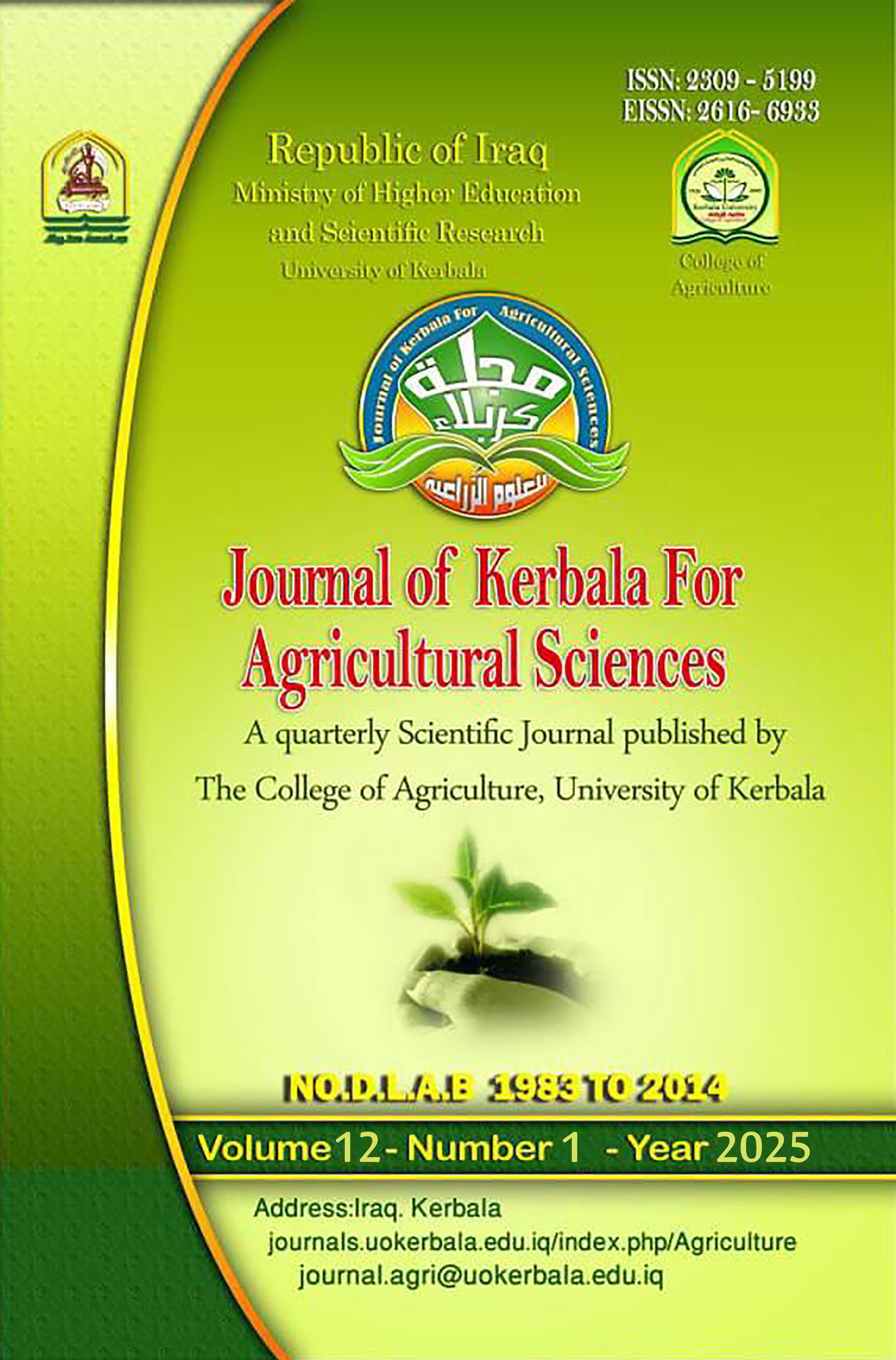Evaluating the efficiency of some plant extracts in controlling the different stages of the peach fruit fly, Bactrocera zonata (Diptera: Tephritidae)
DOI:
https://doi.org/10.59658/jkas.v12i1.3242Keywords:
aqueous extract, neem plant Azadirachta Indica, Peppermint plant Mentha piperita, Geranium plant, Pelargonium zonale, The peach fruit fly, Bactrocera zonata.Abstract
This study examined the efficiency of cold aqueous extract of geranium, neem, and peppermint plants in mortality in different stages of the peach fruit fly, Bactrocera zonata. The results indicated that each of the three extracts had an effect on the third larval instar. The results showed that neem extract had the highest effect on the third larval instar. The cumulative corrected mortality rate after 72 hours reached 67.3%, while the corrected mortality rate of larvae due to the effect of peppermint extract was 58.6%. As for the geranium extract had the least effect among the three extracts on the larval stage, as the corrected cumulative mortality rate reached 52%. As for the effect of the aqueous extracts of the three plants on the stage of pupation, the neem extract was the most effective among the three extracts, as the highest rate of non-emergence of adults at a concentration of 7% was 30%. As for peppermint extract, the mortality rate was 10%, while for geranium extract, the mortality rate was 6%, There was no effect on the pupal stage at the concentration of 3%. These compounds also showed a clear effect in repelling the adult stage, as the geranium extract had a significant impact in repelling insects, as the insect repellency rate reached 72.16%. As for the neem plant extract, the insect repellent rate was 50.03%, while the peppermint plant extract showed a 62% repellent rate for B. zonata adults.
Downloads
Published
How to Cite
Issue
Section
License
Copyright (c) 2025 Copyright (c) 2024 is the Author's article. Published by the Journal of Kerbala for Agricultural Sciences under a CC BY 4.0 license

This work is licensed under a Creative Commons Attribution 4.0 International License.
Licensing Terms
All articles are published under a Creative Commons License and will be directed to the Creative Commons Attribution 4.0 International License (CC BY 4.0) That permits use, distribution, and reproduction in any medium, provided the original work is properly cited. This license also allows the work to be used for commercial purposes.
Use by both non-commercial and commercial users
This content is licensed under a Creative Commons Attribution 4.0 International (CC BY 4.0) license, permitting use by both non-commercial and commercial users. Individual users may access, download, copy, display, and redistribute the articles to colleagues, as well as adapt, translate, and text- and data-mine the content, subject to the following conditions:
- The author's moral rights, including the right of attribution and the right to protect their work from derogatory treatment, are respected.
- Where content in the article is identified as belonging to a third party, users must ensure that any reuse complies with the copyright policies of the owner of that content.
- If the article content is reused for research or educational purposes, users should maintain a link to the appropriate bibliographic citation, including the DOI and a link to the published version on the journal's website.






